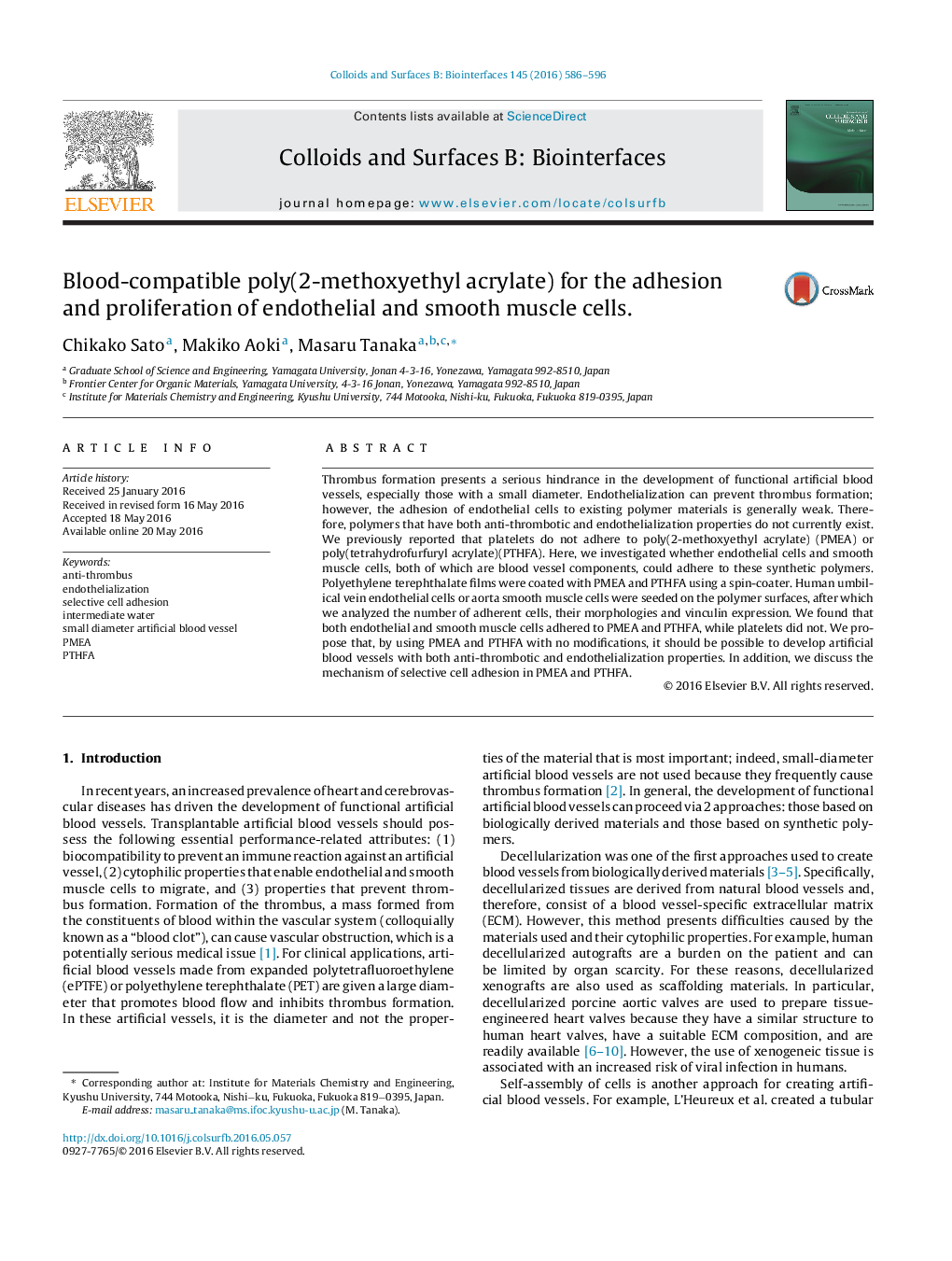| Article ID | Journal | Published Year | Pages | File Type |
|---|---|---|---|---|
| 598984 | Colloids and Surfaces B: Biointerfaces | 2016 | 11 Pages |
•Platelets can not adhere onto PMEA and PTHFA.•Endothelial and smooth muscle cells can adhere onto these polymers.•Endothelial and smooth muscle cells can proliferate on these polymers.•The content of intermediate water might affect the selective cell adhesion.•PMEA and PTHFA can be used to fabricate the artificial blood vessel.
Thrombus formation presents a serious hindrance in the development of functional artificial blood vessels, especially those with a small diameter. Endothelialization can prevent thrombus formation; however, the adhesion of endothelial cells to existing polymer materials is generally weak. Therefore, polymers that have both anti-thrombotic and endothelialization properties do not currently exist. We previously reported that platelets do not adhere to poly(2-methoxyethyl acrylate) (PMEA) or poly(tetrahydrofurfuryl acrylate)(PTHFA). Here, we investigated whether endothelial cells and smooth muscle cells, both of which are blood vessel components, could adhere to these synthetic polymers. Polyethylene terephthalate films were coated with PMEA and PTHFA using a spin-coater. Human umbilical vein endothelial cells or aorta smooth muscle cells were seeded on the polymer surfaces, after which we analyzed the number of adherent cells, their morphologies and vinculin expression. We found that both endothelial and smooth muscle cells adhered to PMEA and PTHFA, while platelets did not. We propose that, by using PMEA and PTHFA with no modifications, it should be possible to develop artificial blood vessels with both anti-thrombotic and endothelialization properties. In addition, we discuss the mechanism of selective cell adhesion in PMEA and PTHFA.
Graphical abstractFigure optionsDownload full-size imageDownload as PowerPoint slide
